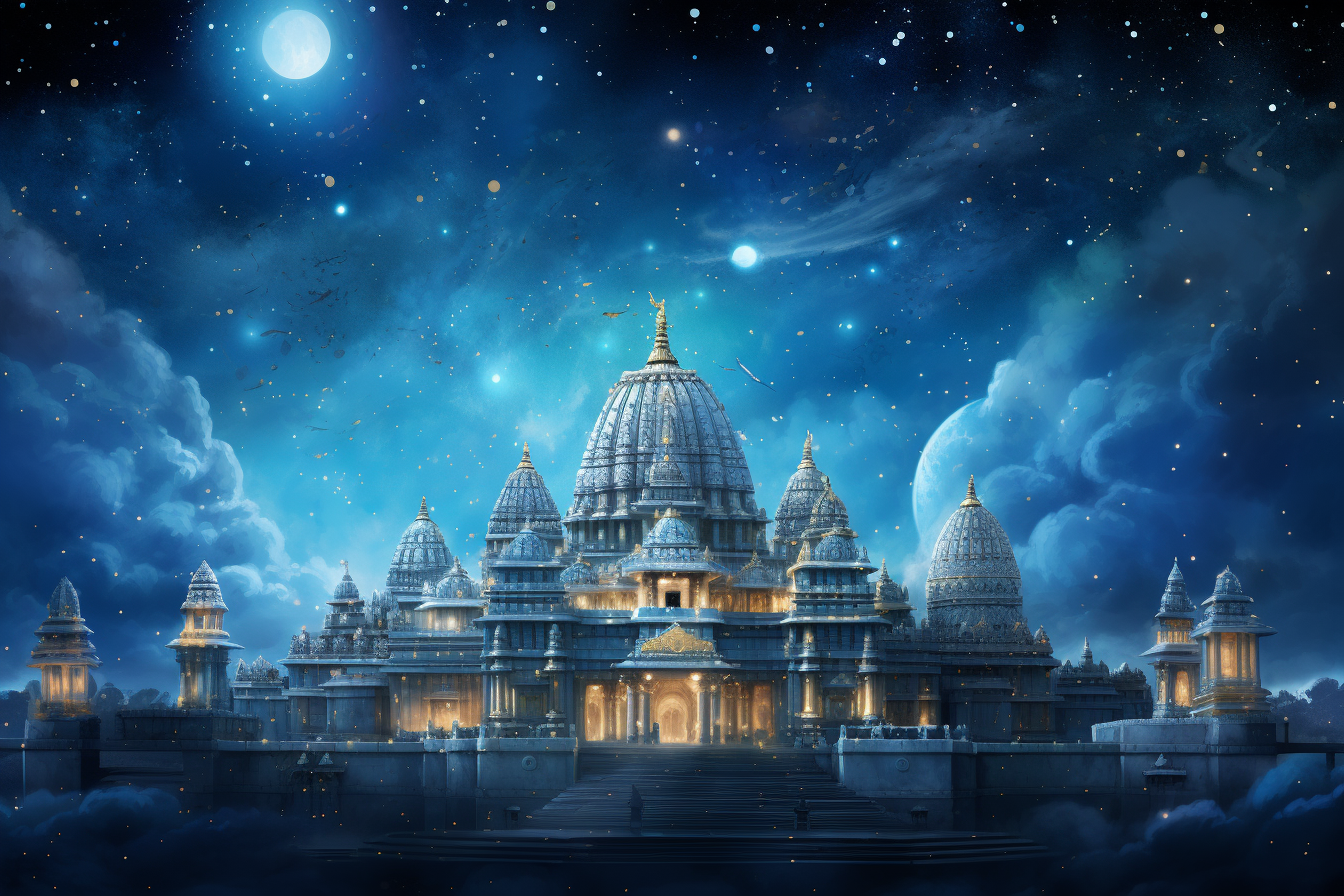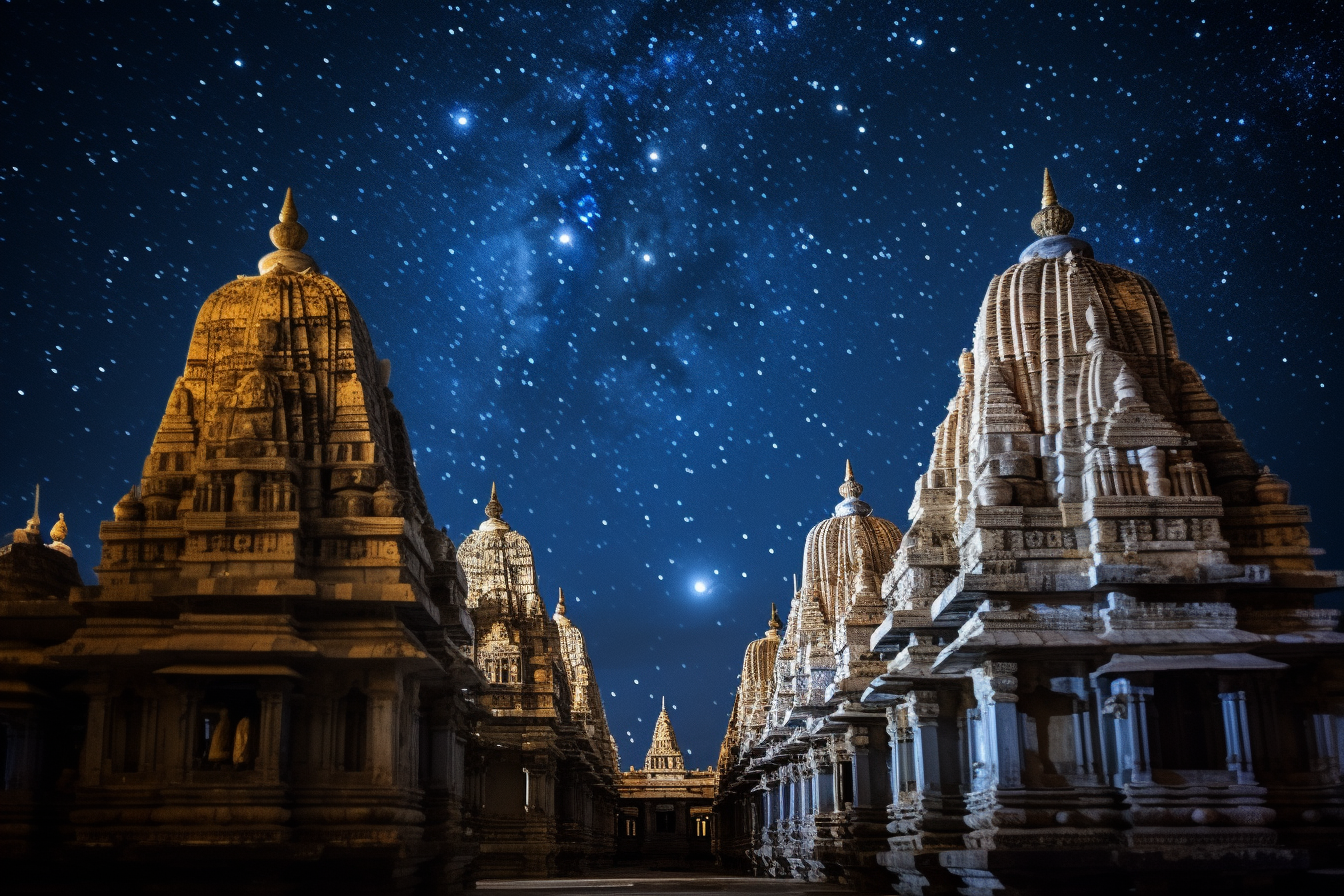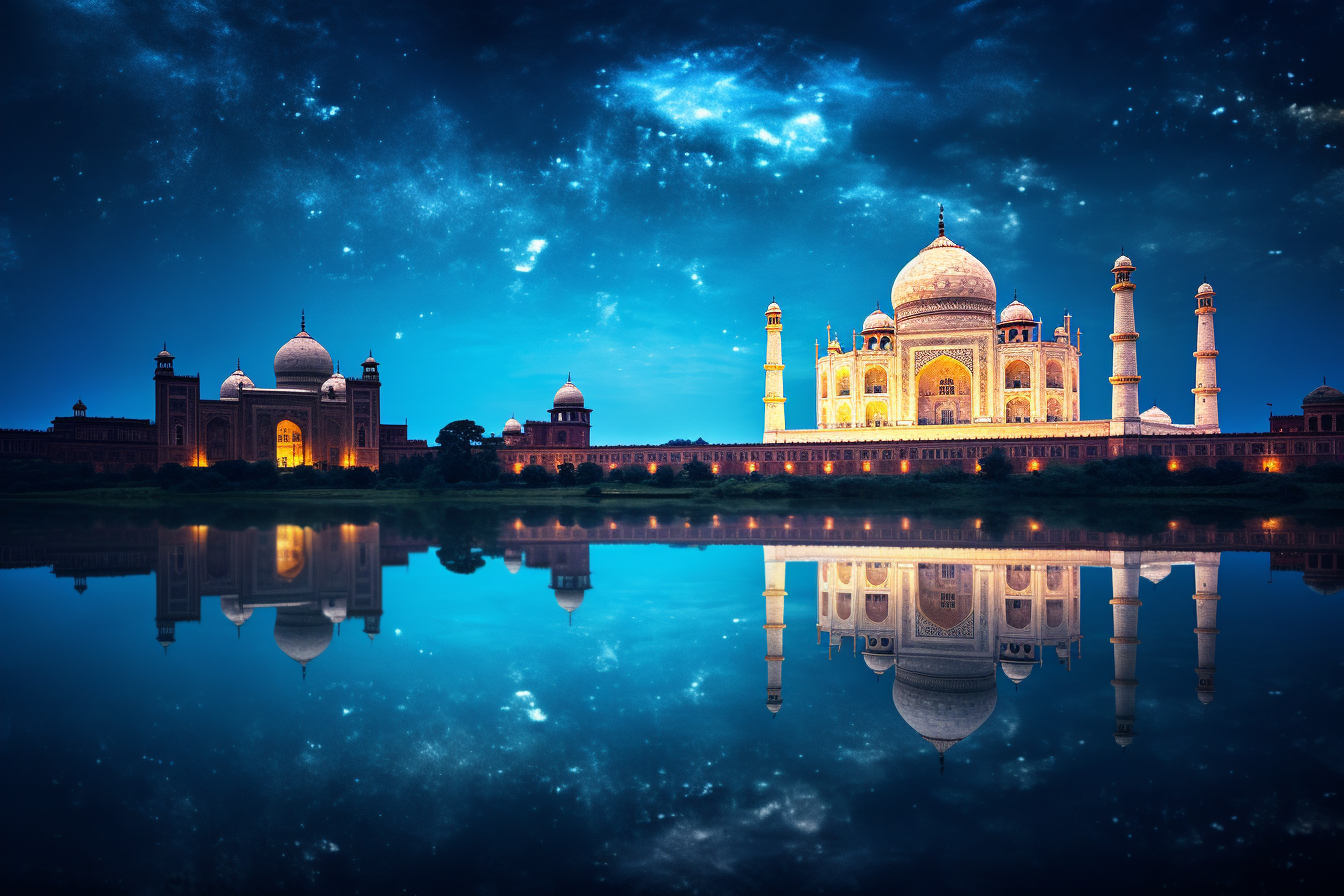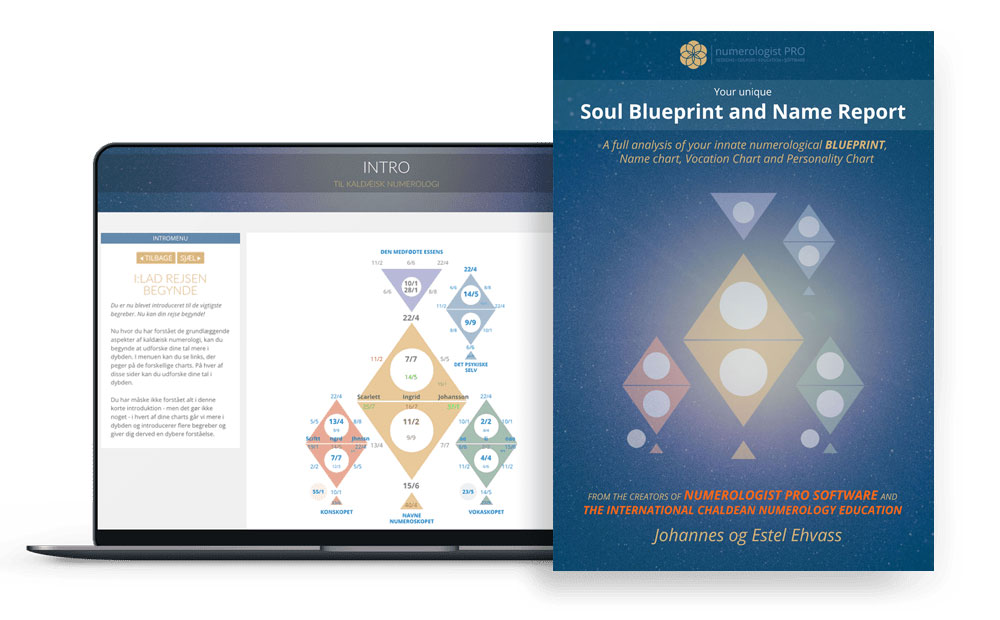Indian Astrology – Jyotish

Johannes Ehvass
Welcome, dear reader! As someone who has devoted over 20 years to the study of yoga, my journey has also led me to a deep fascination with Indian spirituality and philosophy. One gem in this vast landscape of wisdom is Jyotish, often referred to as the science of light. Beyond mere predictive astrology, Jyotish provides a profound framework for understanding our spiritual path, our dharma (duty), and the intricate web of karma (actions and consequences) that weaves through our lives. In this article, I invite you to join me as we explore the depths of Jyotish and its profound connection to understanding spirituality, dharma, and karma.
Jyotish: The Historical and Philosophical Foundations

Often referred to as Vedic astrology or simply ‘Jyotish,’ which translates to ‘the science of light,’ Indian astrology has roots that delve deep into the Indian subcontinent’s rich history and spirituality.
Understanding the historical and philosophical foundation of Jyotish not only provides insights into India’s celestial observations and interpretations but also offers glimpses of the intertwined threads that connect it with Hellenistic and, by extension, modern Western astrology.
Origins in the Vedas
One cannot begin discussing Jyotish without referring to the ancient Vedic scriptures. The Vedas, the oldest sacred texts of India, contain hymns, rituals, and philosophies that form the bedrock of many spiritual practices in India. While the primary focus of the Vedas was not astrology, the Rigveda, one of the oldest of the texts, has hymns dedicated to celestial deities like Surya (Sun) and Chandra (Moon), reflecting an early fascination with the cosmos.
However, the real astrological meat lies in the Vedanga Jyotish, a subsequent text, which delves deeper into timekeeping using the Sun, Moon, and the nakshatras or lunar mansions. This early focus on the Moon’s journey through these fixed stars or nakshatras became a cornerstone of Vedic astrological calculations and remains so today.
The Arrival of Hellenistic Influences
By the time Alexander the Great’s conquest reached the northwestern territories of India, Indian astronomy and astrology were already well-established. The Greeks’ arrival and their subsequent establishment of kingdoms brought in an exchange of ideas, including those about the stars.
The Greeks introduced the Babylonian zodiac of twelve signs, which, over time, was incorporated into Jyotish. This is evident in the use of the twelve zodiac signs in today’s Vedic astrology alongside the original 27 or 28 nakshatras. While the nakshatras retained their importance, especially in matters of timing and predicting personal experiences, the zodiac signs offered a broader framework, similar to the one used in Hellenistic astrology, to analyze personality traits and broader life themes.
Philosophical Underpinnings
At its heart, Jyotish is deeply philosophical and spiritual. Rooted in the concept of karma, Vedic astrology posits that our present life circumstances are the result of past actions, not just from this life, but also from previous lives. This belief is mirrored in the idea of the birth chart or ‘janma kundali’ as a cosmic blueprint of karmic potentialities. The planets, known as ‘grahas’ or ‘seizers,’ symbolize various karmic forces that play out in one’s life.
This karmic perspective is what differentiates Jyotish from Hellenistic astrology at a fundamental level. While both systems acknowledge the influence of the planets on human affairs, Jyotish extends this influence into past and future lives, emphasizing the soul’s journey through cycles of birth and rebirth. The Hellenistic system, on the other hand, tends to focus more on the individual’s experience in the current lifetime.
The Growth and Spread of Jyotish
From its origins in the Vedas, Jyotish evolved through the millennia with the composition of numerous texts, notably the Brihat Parashara Hora Shastra, attributed to Sage Parashara. This text, among others, laid down the foundational principles of horoscope analysis, planetary characteristics, and predictive techniques. The subsequent centuries saw the flourishing of astrological schools and lineages, each contributing nuances and layers to the rich tapestry of Jyotish.
By the early centuries of the first millennium CE, Indian astrology began to influence neighboring regions, including Southeast Asia, Tibet, and China, leading to a cross-cultural exchange of astrological concepts. This influence also moved westward, with Islamic scholars during the Golden Age of Islam taking interest in both Hellenistic and Indian astrology. They acted as bridges, blending and transferring knowledge back to Europe, which in part shaped the Renaissance’s astrological revival.
Intersections with Hellenistic and Modern Astrology
Though Jyotish and Hellenistic astrology developed mostly independently, the cross-pollination of ideas, especially during the Hellenistic period and the Islamic Golden Age, resulted in shared elements. The incorporation of the twelve-sign zodiac in Jyotish, as previously mentioned, is a clear instance of this synthesis. However, the influences were not unidirectional. For instance, the intricate timing system of planetary periods or ‘dasha’ used in Jyotish found parallels in Hellenistic time-lord systems.
In the modern era, as astrologers from the West became increasingly interested in Vedic traditions, they started integrating Jyotish techniques into Western astrological practices and vice versa. This fusion approach has created a global astrological community where the boundaries are more porous, and practitioners draw from multiple traditions to provide deeper insights.
In conclusion, Jyotish’s historical and philosophical foundations offer not just a window into India’s spiritual and cosmic worldview but also highlight the interconnectedness of global astrological traditions. From Vedic hymns to global cross-pollination, the journey of Jyotish mirrors humanity’s enduring quest to understand the mysteries of the cosmos and our place within it.
Jyotish: Key Concepts and Components

As one delves into the world of Jyotish, the intricate components that make up this celestial science emerge.
From lunar mansions to the vital role of the planets and the interplay of houses, every aspect serves to weave a narrative that reflects an individual’s life journey.
Simultaneously, these components illustrate the depth and complexity of this system and its unique yet shared philosophies with Hellenistic astrology.
The Zodiac and the Nakshatras
Central to Jyotish is the Zodiac, a celestial belt where the planets move. But what sets Jyotish apart is the significant role played by the Nakshatras or lunar mansions. Spread across the Zodiac, these 27 (sometimes 28) Nakshatras mark the Moon’s daily movement against the backdrop of fixed stars. Each Nakshatra spans 13 degrees and 20 minutes of the Zodiac and possesses its distinct personality, symbol, deity, and mythological tale.
In addition to the planetary rulerships commonly associated with Zodiac signs, Nakshatras have their planetary lords, determining the individual’s ‘dasha’ or planetary period. The daily passage of the Moon through these Nakshatras is crucial for choosing auspicious times for rituals or initiating new endeavors.
While Hellenistic astrology does utilize fixed stars in its interpretations, the Nakshatras’ comprehensive system adds another layer of depth to Vedic chart readings. The Nakshatras integrate myth, symbolism, and celestial movements, offering nuanced insights into one’s character and destiny.
The Navagrahas: The Nine Planets
Jyotish recognizes the Sun, Moon, Mars, Mercury, Jupiter, Venus, Saturn, and the ascending and descending lunar nodes, Rahu and Ketu, as the nine influential celestial bodies or Navagrahas. Each of these ‘grahas’ or ‘seizers’ is believed to exert particular influences on human affairs.
The mythological narratives associated with each graha deepen the understanding of their astrological significance. For instance, Rahu and Ketu’s tale, involving the churning of the cosmic ocean and the quest for immortality, reflects their nature as karmic points in the horoscope, indicating significant life challenges and evolution.
Hellenistic astrology, too, holds the planets in high esteem. But the inclusion of the lunar nodes as key players is more pronounced in Jyotish, particularly in predicting the timing of significant life events through the ‘dasha’ system.
Rashi, Bhava, Dasha, and More
The Zodiac in Jyotish is divided into twelve signs or ‘Rashi,’ much like its Hellenistic counterpart. Each Rashi spans 30 degrees of the Zodiac, with a ruling planet and element. These Rashis form the broad canvas upon which the planets paint their tales.
Bhavas, akin to the houses in Western astrology, represent life’s various areas. From one’s self (first house) to relationships, career, and ultimate liberation (twelfth house), Bhavas provide a structure to the horoscope, and planets within them showcase the energies at play in those life sectors.
The ‘dasha’ system, unique to Jyotish, is a predictive technique based on the Moon’s position in a particular Nakshatra at birth. An individual undergoes various planetary periods throughout their life, with each planet offering its karmic lessons and experiences during its dasha.
Karma, Reincarnation, and Jyotish
Underpinning Jyotish’s interpretations is the profound belief in karma and reincarnation. It proposes that our current life circumstances are a culmination of past actions, spanning multiple lifetimes. The ‘janma kundali’ or birth chart, in this context, becomes a karmic map, highlighting the challenges, opportunities, and lessons one might encounter.
The grahas are not mere celestial bodies exerting influence; they are karmic agents facilitating the soul’s evolutionary journey. For instance, Saturn, or Shani, while feared for its challenging lessons, is revered as the great teacher, ensuring one reaps what they’ve sown, guiding them towards spiritual maturation.
Such a perspective aligns with Hellenistic beliefs, where the natal chart, too, is seen as a soul’s blueprint, though Jyotish places a more substantial emphasis on the cyclical journey of the soul through multiple births.
Intersections with Hellenistic Astrology
Though distinct in many aspects, Jyotish and Hellenistic astrology share core principles. Both systems recognize the twelve zodiac signs, the houses, and the planetary influences. The primary difference lies in the calculation methods (sidereal for Jyotish and tropical for Hellenistic) and the emphasis on the Moon’s position in Jyotish. Furthermore, while both traditions are rooted in spiritual philosophies, Jyotish’s karmic and reincarnation principles offer a more cyclical view of existence.
Another striking similarity is the profound importance of planetary periods. Jyotish’s dasha system finds resonance in Hellenistic time-lord techniques, which, too, aim to predict significant life periods. This shared approach indicates a potential common philosophical thread or mutual influence in antiquity.
In conclusion, Jyotish is not merely an astrological system; it’s a profound philosophical, spiritual, and astronomical tradition. Its components, from the Nakshatras to the intricate dasha system, paint a rich picture of human existence, intertwined with cosmic rhythms. Its similarities with Hellenistic astrology remind us that across time and space, humans have consistently gazed skyward, seeking answers and understanding, bridging cultures and philosophies in their shared celestial quest.
Jyotish: Practical Application and Modern Relevance

While the foundations and key components of Jyotish are deeply rooted in ancient wisdom and spirituality, its practical applications remain as relevant today as they were thousands of years ago.
The age-old art of Vedic astrology provides guidance on various life matters, from marriage and career choices to health and wellbeing.
As its influence expands beyond Indian shores, the global appreciation of Jyotish, alongside its similarities and differences with Western astrology, becomes evident.
Jyotish in Daily Life
The pervasive influence of Jyotish in Indian culture is undeniable. Its presence can be felt in myriad aspects of daily life, guiding individuals and families in making informed decisions.
Marriage and Relationships
In India, horoscopic matches, known as ‘Kundali Milan,’ are common preludes to marriages. This process involves comparing the birth charts of potential partners to determine compatibility. Factors like the ‘Ashtakoota’ system, which evaluates eight criteria, including mental compatibility, sexual compatibility, and the potential for progeny, play pivotal roles. While it’s not the sole determinant, a harmonious astrological match is deemed favorable for marital bliss.
Career and Vocation
Another practical application lies in career guidance. An individual’s tenth house, its lord, and the planets therein can offer insights into one’s professional inclinations and potential success areas. Furthermore, the current ‘Dasha’ or planetary period can indicate periods of professional growth or challenges.
Health and Wellbeing
Jyotish also provides insights into one’s health predispositions. The sixth house highlights potential health challenges, while the Ascendant and the Moon signify overall vitality and mental health, respectively. Astrologers can offer remedies, ranging from gemstone recommendations to specific rituals, to counterbalance negative influences.
Other Life Decisions
From choosing auspicious dates (‘Muhurta’) for significant events like house-warming ceremonies to determining the best time to start a new venture, Jyotish permeates various facets of daily life in cultures where it’s practiced.
Differences and Commonalities with Western Astrology
While both Jyotish and Western astrology share a mutual celestial foundation, there are distinct differences in their application and philosophies.
Zodiac Systems
One of the most pronounced differences is the zodiac system used. Jyotish employs the sidereal zodiac, which aligns with constellations, whereas Western astrology uses the tropical zodiac, based on the seasons. This results in the Sun sign dates differing between the two systems, leading to some individuals having different Sun signs in each system.
Planetary Influence
While both systems acknowledge the primary planets, Jyotish places considerable emphasis on the Moon’s position and the lunar mansions (Nakshatras). Additionally, the North and South lunar nodes, Rahu and Ketu, have a more prominent role in Vedic astrology than in many Western traditions.
Philosophical Underpinnings
Jyotish’s deep-rooted beliefs in karma and reincarnation differentiate its interpretations. A Jyotish chart provides insights not just into this life but potentially offers glimpses of past karmas influencing present circumstances. While some Western astrological traditions explore karmic astrology, Jyotish has it intrinsically woven into its fabric.
Despite these differences, both systems aim to offer insights, guidance, and a deeper understanding of one’s life journey, showcasing humanity’s universal quest for meaning and connection with the cosmos.
The Global Spread of Jyotish and Modern Relevance
In recent decades, the allure of Jyotish has expanded beyond India’s borders. This global spread is attributed to various factors:
Migration and Diaspora
The Indian diaspora, settling in different parts of the world, carried with them their rich cultural and spiritual traditions, including Jyotish. As they integrated with diverse communities, the wisdom of Vedic astrology piqued curiosity among locals, leading to a wider appreciation and adoption.
Digital Age and Online Learning
The digital revolution has democratized knowledge. Online courses, webinars, and platforms dedicated to Jyotish have made it accessible to enthusiasts worldwide. An individual, irrespective of geographical location, can delve deep into this knowledge, further fostering its global growth.
Search for Deeper Meaning
The modern world, with its rapid changes and uncertainties, has seen individuals seek deeper meaning and guidance. In this quest, many have turned to ancient wisdom systems, including Jyotish, finding solace and direction in its teachings.
Furthermore, the dialogues between Jyotish practitioners and Western astrologers have enriched both traditions, leading to mutual respect and a fusion of techniques in some contemporary practices.
Conclusion
The journey of Jyotish, from its ancient Vedic roots to its modern global relevance, underscores its timeless wisdom and adaptability. Its practical applications, ranging from marital matches to career guidance, highlight its continued importance in daily life. Simultaneously, the shared philosophies and unique distinctions between Jyotish and Western astrology emphasize the diverse ways humanity seeks cosmic connection and understanding. As Jyotish continues to flourish worldwide, it stands as a testament to the enduring allure of the stars and the stories they tell.

Johannes & Estel: Renowned authorities in Numerology, Astrology, and the esoteric arts. As the founders of Scandinavia's premier Numerology school, we're delighted to share our insights through this curated series on astrology. Dive in and discover the stars.
The Worlds Most Advanced Numerology Report

Your birthdate reveals your unique life purpose, potentials, talents, weaknesses, and karma in this life.
Your names show what you attract into your life regarding your career, relationships, happiness, money, and success.
GET THE REPORT HERE
Introduction to Astrology
The history of Astrology
Moving beyond deterministic astrology
Foundation of Astrology: Planets, Signs and Houses
Astrology and the Holographic Universe
The Holographic Universe
The Human Psyche as a Mirror to The Solar System
The Human Body as a Mirror to The Star Signs
Astrology Background
Egyptian Astrology
Mayan Astrology
Chinese Astrology
Indian Astrology - Jyotish
Celtic Astrology
Tibetan Astrology
Mesopotamian Astrology
Early Mesopotamian Astrology: The Dawn of Celestial Divination
Enuma Anu Enlil: The Epicenter of Babylonian Celestial Omen Interpretation
Babylonian and Chaldean Astrology
Babylonian and Chaldean Astrology
Chaldean influence and evolution
Chaldean Wisdom: Safeguarding and Transmitting Astrological Knowledge
Hellenistic Astrology
Hellenistic Astrology background
Claudius Ptolemy and Tetrabiblos
Vettius Valens
Dorotheus of Sidon
Persian Astrology
Persian Astrology background
Sassanian Astrology
Late Antiquity and The Transition Period
Late Antiquity and The Transition Period
Hellenistic to Islamic Transition: The Torchbearers of Astrological Wisdom
Islamic Golden Age
Arabian Astrology Background
Arabian Astrology Contributions
Medieval Astrology
Introduction: The Medieval Cosmos
Monastic Preservers: Astrological Knowledge in the Dark Ages
Astrology in Medieval Medicine
Kings, Queens, and Constellations: Astrology in the Medieval Court
The Church and the Stars: A Contentious Relationship
Universities and Scholastic Pursuits: Academic Astrology
Astronomy & Astrology: Tools of the Trade
Medieval Astrological Houses and the Synthesis of Traditions
Transition to the Renaissance: Humanism and the Celestial Arts
Reflections: Medieval Astrology's Echoes in Modern Practice
Astrological Art of the Middle Ages
Famous Medieval Astrologers
Medieval Astrological Texts
Renaissance Astrology
Renaissance Humanism and Astrology
Scientific Advancements and Astrology
The Social Fabric: Astrology in Everyday Renaissance Life
Court Astrologers of the Renaissance
Controversies and Conflicts: Astrology Under Scrutiny
Renaissance Texts and Authors: Continuation of a Tradition
Astrology and Art: Celestial Imagery in the Renaissance
Renaissance Astrological Practices: Evolutions and Innovations
End of the Renaissance: The Gradual Decline of Astrological Influence
Renaissance Astrology's Echo in the Modern World
Enlightenment Astrology
Introduction: The Enlightenment and Astrology
Challenging the Stars: Astrology's Critics during the Enlightenment
Astrology and the New World
Astrology in the 19th Century
The Dawn of Psychological Astrology
Astrology in the 20th Century: A Modern Renaissance
Astrological Associations and Schools
Modern Controversies and Astrology
Astrology and Popular Culture
Astrology and Technology
Current Trends and Future Directions in Astrology
Conclusion: Reflecting on Astrology's Evolution
The Planet Significances
The Sun in Astrology
The Moon in Astrology
Mercury in Astrology
Venus in Astrology
Mars in Astrology
Jupiter in Astrology
Saturn in Astrology
Uranus in Astrology
Neptune in Astrology
Pluto in Astrology
Chiron in Astrology
Black Moon Lilith in Astrology
Pars Fortuna in Astrology
Ceres in Astrology
Houses in Astrology
Introduction to Astrological Houses
The Angular Houses
The Succedent Houses
The Cadent Houses
The 1st House
The 2nd House
The 3rd House
The 4th House
The 5th House
The 6th House
The 7th House
The 8th House
The 9th House
The 10th House
The 11th House
The 12th House
Interaction Between Houses
Derived Houses, House Rulers, and Interceptions
Conclusion: Synthesizing House Knowledge
All Materials © 2023 & 2024 Numerologist PRO
Terms of Service: Information provided by Numerologist PRO and/or from this web site is not intended as advice (medical, psychological, financial or other), nor is it intended to replace your work with a qualified professional (medical or otherwise). You should maintain your relationship with your providers and consider the services of this site as informational only. Any information, stories, examples, or testimonials presented on this website do not constitute a warranty, guarantee, or prediction regarding the outcome of an individual. This web site is a sharing of knowledge and information of numerology/energy work based on the experiences of Numerologist PRO. You are encouraged to make your own decisions based on your own research and inner guidance. By booking and receiving services, you agree to fully release and hold harmless Numerologist PRO and all it's affiliated numerologists from and against any liability or claim that may arise out of or in connection with their service(s).
Numerologist PRO © 2021

CONTACT
numerologist@numerologistpro.com
LIKE US, and get free numerology tools, info about your personal numbers, best business dates of the year - and more!
YOUR FREE NUMEROSCOPE CHART
Enter your name and email below and get access to our free online numerology chart tool.